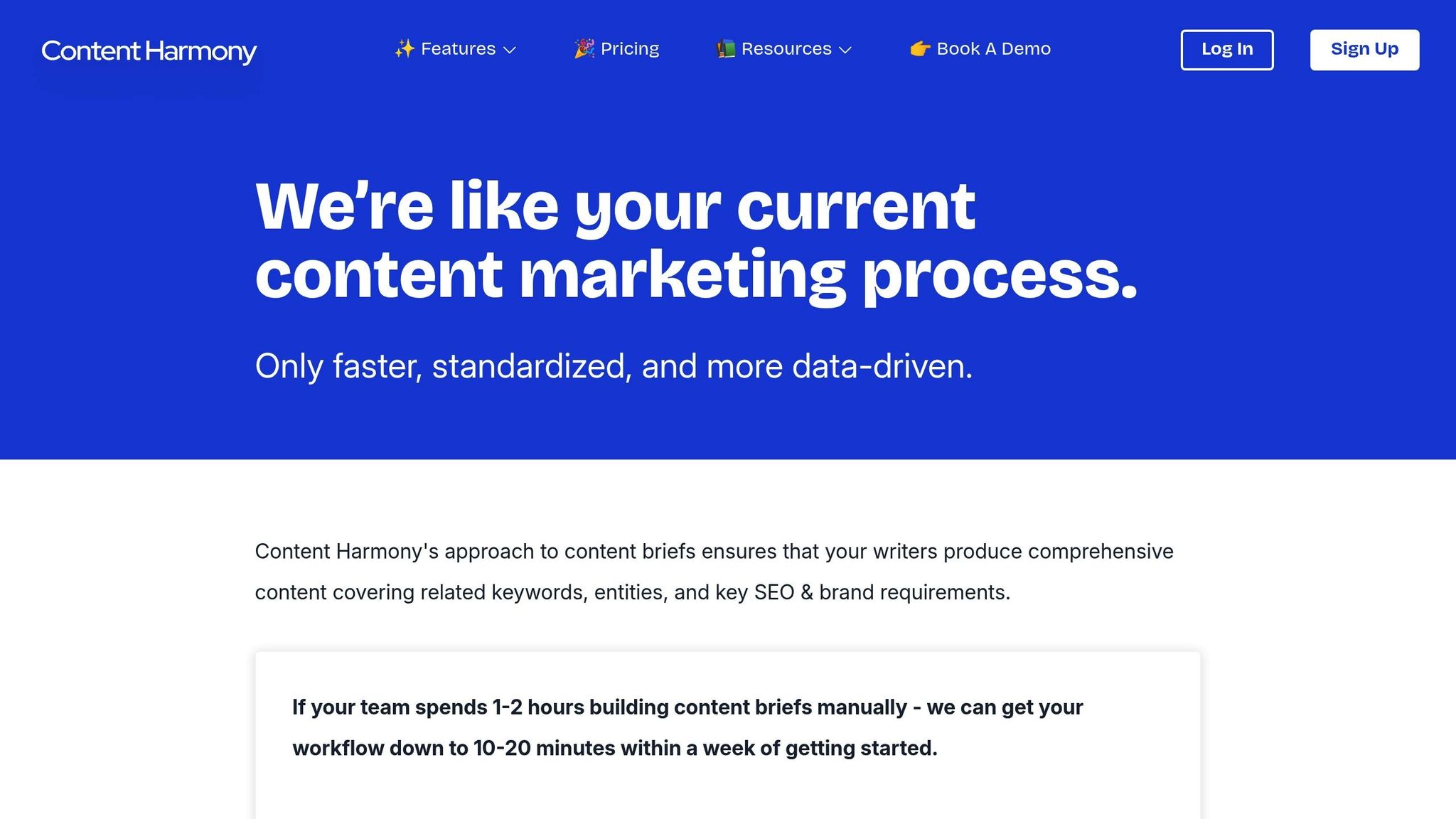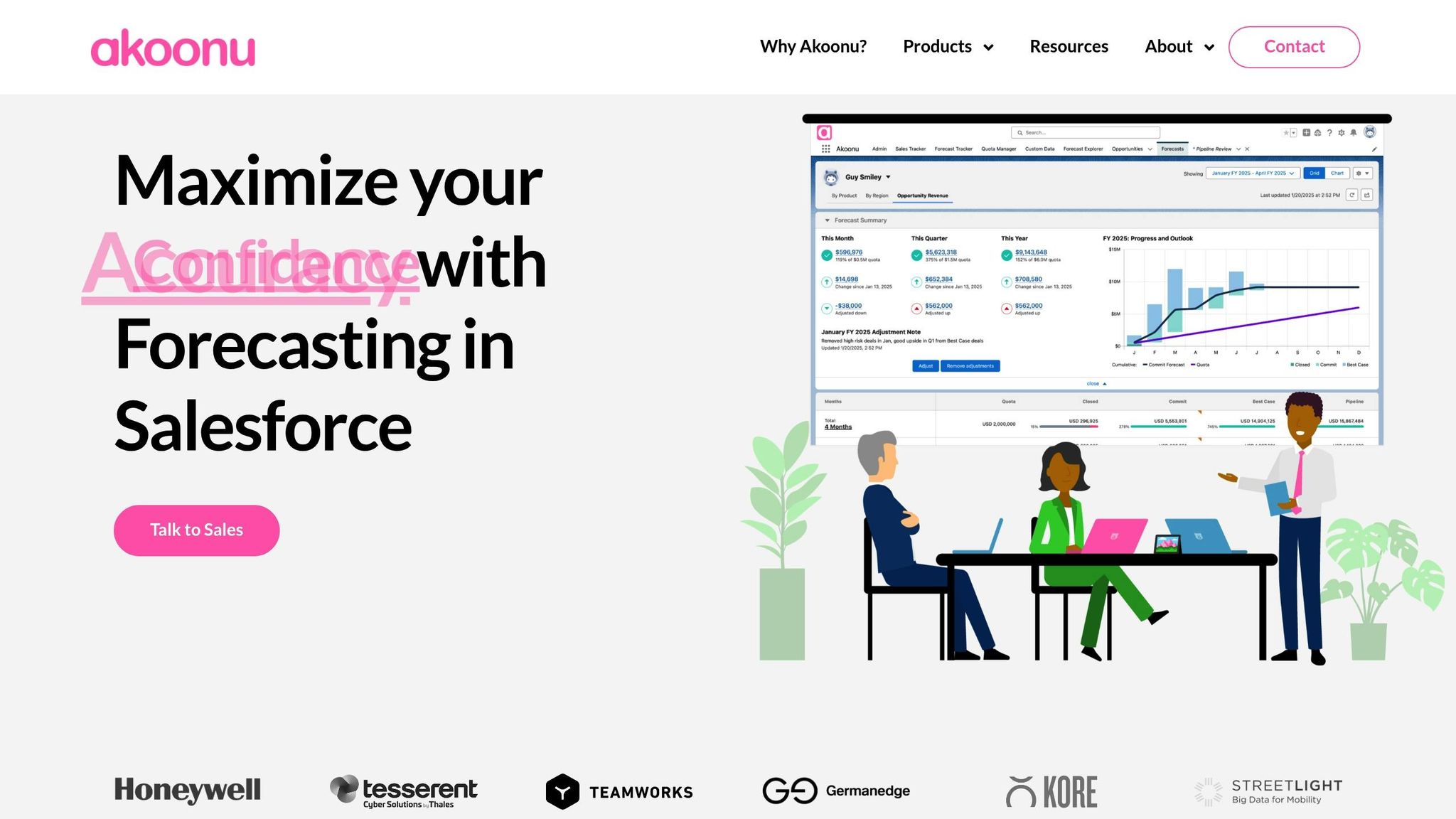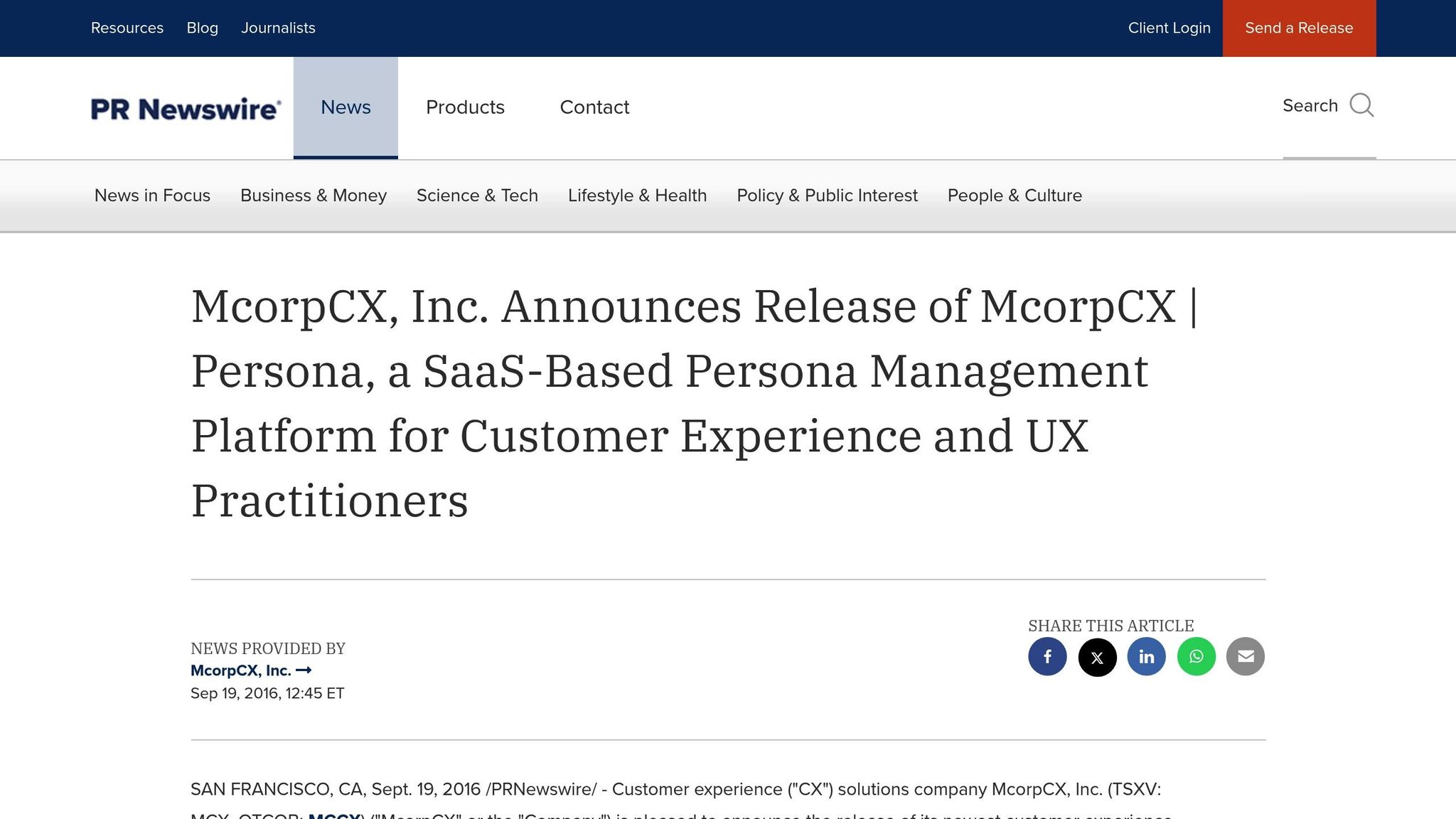Ultimate Guide to Persona Development Tools
Explore essential persona development tools that enhance customer insights, streamline marketing strategies, and drive better business decisions.

Want to understand your customers better? Persona development tools can help. These tools transform data into detailed customer profiles, enabling businesses to create targeted marketing strategies. Here’s a quick summary of what you’ll learn:
- What personas are: Profiles that represent your ideal customers, including demographics, pain points, buying behavior, and decision drivers.
- Why persona tools matter: They save time, automate data collection, and provide templates for consistency.
- Top tools: Explore options like Content Harmony, Akoonu, and McorpCX Persona for features like real-time collaboration, CRM integration, and advanced segmentation.
- Key features to look for: Templates, marketing platform integrations, and dynamic updates.
- How to use personas effectively: Regular updates, cross-team communication, and avoiding common mistakes like over-generalization or outdated data.
Quick Tip: Choose a tool that fits your business size, budget, and tech stack, and keep personas updated to stay aligned with customer needs.
How to Create a Buyer Persona That Actually Helps You Sell
Must-Have Features in Persona Tools
The right persona tools can take your customer profiles to the next level, offering deeper insights and better usability. These features are essential for creating profiles that truly inform your marketing and business strategies.
Template Options
A solid template system simplifies the creation of personas and ensures consistency across your team. Look for tools that offer:
- Customizable fields to match the specific needs of your industry
- Dynamic updates that reflect real-time data changes
- Visual customization to align templates with your brand
- Collaborative editing to allow team members to contribute easily
These features make the process smoother and help produce personas that are practical and ready for action.
Marketing Platform Connections
For truly useful personas, seamless integration with your marketing platforms is crucial. Here’s how different types of integrations can enhance your efforts:
| Integration Type | Purpose | Business Impact |
|---|---|---|
| CRM Systems | Sync customer interaction data | Improves lead scoring and personalization |
| Marketing Automation | Trigger targeted campaigns | Boosts campaign performance |
| Analytics Platforms | Track behavior patterns | Helps refine personas with better accuracy |
| Social Media Tools | Monitor social engagement | Offers insights into customer preferences |
Look for tools with API access and pre-built connectors to automate data flow and ensure real-time updates. These integrations keep your personas relevant and enhance your marketing results.
Leading Persona Development Tools
When it comes to persona development, having the right tool can make all the difference. Below are three top tools designed to simplify the process and integrate seamlessly into your workflows.
Content Harmony's Persona Template

Content Harmony offers a simple, cloud-based persona template through Google Docs. Key features include:
| Feature | Benefit |
|---|---|
| Real-time Collaboration | Lets multiple team members edit together |
| Version History | Tracks changes and allows easy rollbacks |
| Custom Fields | Flexible sections to suit various industries |
| Export Options | Easily share as PDF or DOC files |
This template is great for teams looking for consistency while still allowing room for customization. Its cloud-based setup is especially handy for remote teams working on persona projects.
Akoonu

Akoonu combines CRM functionality with content management, making it a powerful tool for dynamic persona development. Its standout features are:
- Dynamic Data Integration: Automatically pulls customer data from your CRM.
- Behavioral Tracking: Tracks customer interactions across different touchpoints.
- Content Mapping: Connects persona details directly to content strategies.
Akoonu shines by creating "living personas" that update as your customer data evolves, ensuring your personas stay relevant over time.
McorpCX Persona

McorpCX Persona is tailored for enterprise-level persona creation and campaign management. Here’s what it offers:
| Capability | Description |
|---|---|
| Journey Mapping | Creates visual customer journeys tied to personas |
| Data Visualization | Interactive dashboards display persona insights |
| Segmentation Tools | Advanced filters for precise targeting |
| ROI Tracking | Measures the success of persona-driven campaigns |
This tool is ideal for businesses that need detailed persona insights and advanced campaign mapping.
Each of these tools brings distinct benefits, whether you're a small team or a large enterprise. The best choice depends on your specific needs and how well it integrates with your existing systems.
Setting Up Your Persona Tools
Choosing the Right Tool
When selecting a persona tool, focus on what aligns with your organization's specific needs. Here are some key factors to evaluate:
| Factor | Details to Consider |
|---|---|
| Company Scale | For small teams: Opt for cloud-based templates and basic analytics. For larger enterprises: Look for tools offering advanced segmentation and multi-user functionality. |
| Budget | Compare pricing models to ensure affordability and long-term usability. |
| Integration Needs | Confirm the tool works seamlessly with your existing CRM and marketing automation platforms. |
| Data Requirements | Match the tool’s capabilities with your data volume, analytics needs, and reporting preferences. |
Pick tools that complement your current tech stack and can grow alongside your business. After choosing, integrate the tool with your core systems to ensure smooth data flow.
Connecting with Business Systems
Proper integration keeps your data consistent across all marketing platforms. Here’s how to approach it:
-
Map Your Data Flow
Identify which systems (e.g., CRM, analytics, marketing platforms) need to share data. Create a visual map showing how information will move between them. -
Set Up API Connections
Collaborate with your IT team to configure API authentication, schedule data syncs, monitor for errors, and test the connections for accuracy. -
Validate Data Transfer
Run a small-scale test to ensure data is transferring correctly. Check for any mismatches or mapping errors and resolve them before full deployment.
Once integration is complete, focus on training your team to make the most out of the tools.
Staff Training Guidelines
Prepare your team to use the tools efficiently by covering these areas:
| Training Component | What It Covers |
|---|---|
| Basic Tool Navigation | Help team members get comfortable with the interface and core features. |
| Data Input Standards | Set clear guidelines for consistent and accurate data entry. |
| Advanced Features | Teach how to leverage custom reporting and perform deeper data analysis. |
| Practical Workshops | Use live data in hands-on exercises for real-world experience. |
Start with foundational skills, then gradually introduce advanced features. Keep team knowledge up-to-date with regular training sessions and updates. This ensures everyone can use the tools effectively as new capabilities are added.
Using Personas in Marketing
Regular Persona Updates
Keep personas up to date by incorporating insights from market trends, customer feedback, behavioral data, and demographic shifts.
| Update Component | Frequency | Actions |
|---|---|---|
| Market Trends | Monthly | Review industry reports, competitor strategies, and emerging customer needs. |
| Customer Feedback | Quarterly | Analyze support tickets, surveys, and social media sentiment. |
| Behavioral Data | Bi-weekly | Track website analytics, purchase patterns, and content engagement. |
| Demographics | Semi-annually | Refresh details like age ranges, income levels, and geographic distribution. |
Use version control to document changes in customer behavior, ensuring your marketing strategies stay aligned with the latest insights.
Team Communication
Keeping personas updated is only half the battle - sharing these updates across teams is just as critical.
| Department | Role in Persona Usage | Communication Method |
|---|---|---|
| Marketing | Campaign targeting, content creation | Weekly strategy meetings |
| Sales | Lead qualification, customer outreach | CRM updates and sales reports |
| Product | Feature development, user experience | Monthly roadmap reviews |
| Customer Support | Direct customer feedback, issue tracking | Daily feedback logs |
Create a shared repository where all teams can access the latest persona data. This ensures consistent messaging and avoids confusion caused by outdated information.
Common Persona Mistakes
Mistakes in persona development can derail your marketing efforts and reduce campaign effectiveness. Watch out for these pitfalls:
- Over-generalization: Personas that are too broad make targeting difficult.
- Static Profiles: Failing to update personas as market conditions change.
- Ignoring Data: Relying on assumptions instead of real customer insights.
- Inconsistent Application: Teams working with outdated personas. Stick to a single, centralized source.
- Missing Context: Neglecting behavioral and psychographic details that add depth.
Conclusion
Persona development tools play a key role in connecting business strategies with customer insights. They simplify the process of creating personas and ensure customer data stays relevant.
To get the most out of these tools, focus on the following:
- Use data systems that combine numbers with real customer feedback
- Keep all persona-related data accessible to every team
- Regularly update personas to reflect market changes
- Train teams to analyze and use persona insights effectively
By following these steps, you can make sure persona tools contribute to better decision-making across different departments.
When used effectively, these tools can influence strategies in marketing, product development, and customer support. The key is to choose tools that fit your organization's goals, keep them updated, and encourage teamwork when applying persona insights.
FAQs
How can I make sure the persona development tool I choose works seamlessly with my CRM and marketing platforms?
To ensure the persona development tool you select integrates smoothly with your existing CRM and marketing platforms, start by reviewing the tool’s compatibility features. Check if it supports direct integrations with your current systems or offers API access for custom connections.
It’s also a good idea to consult the tool’s documentation or customer support team to confirm integration capabilities and any potential limitations. Testing the tool with your platforms during a free trial or demo period can help you identify any challenges before making a commitment.
What mistakes should you avoid when updating and using customer personas in your marketing strategy?
To effectively use customer personas in your marketing strategy, it's important to avoid common pitfalls that can undermine their value. Here are some key mistakes to watch out for:
- Relying on outdated data: Customer behaviors and preferences evolve over time. Regularly update your personas to ensure they reflect current trends and insights.
- Being too generic: Overly broad personas fail to capture the nuances of your audience. Focus on specific details that make each persona unique and actionable.
- Ignoring feedback: Neglecting to incorporate feedback from real customers or your team can lead to inaccurate representations. Use surveys, interviews, and analytics to validate your personas.
By keeping your personas accurate, detailed, and regularly updated, you can ensure they remain a powerful tool in guiding your marketing decisions and strategies.
How often should I update my customer personas, and what key data should I review during these updates?
To keep your customer personas relevant and effective, it's a good idea to update them at least once a year or whenever there are significant changes in your market, audience, or business strategy. Regular updates ensure your personas reflect current customer behaviors, preferences, and challenges.
When updating, focus on data such as:
- Demographics: Age, location, income level, and occupation.
- Behavioral insights: Purchase habits, online activity, and content preferences.
- Feedback and trends: Customer feedback, industry trends, and competitor analysis.
Staying proactive with persona updates helps you tailor your marketing and product strategies to meet your audience's evolving needs effectively.

